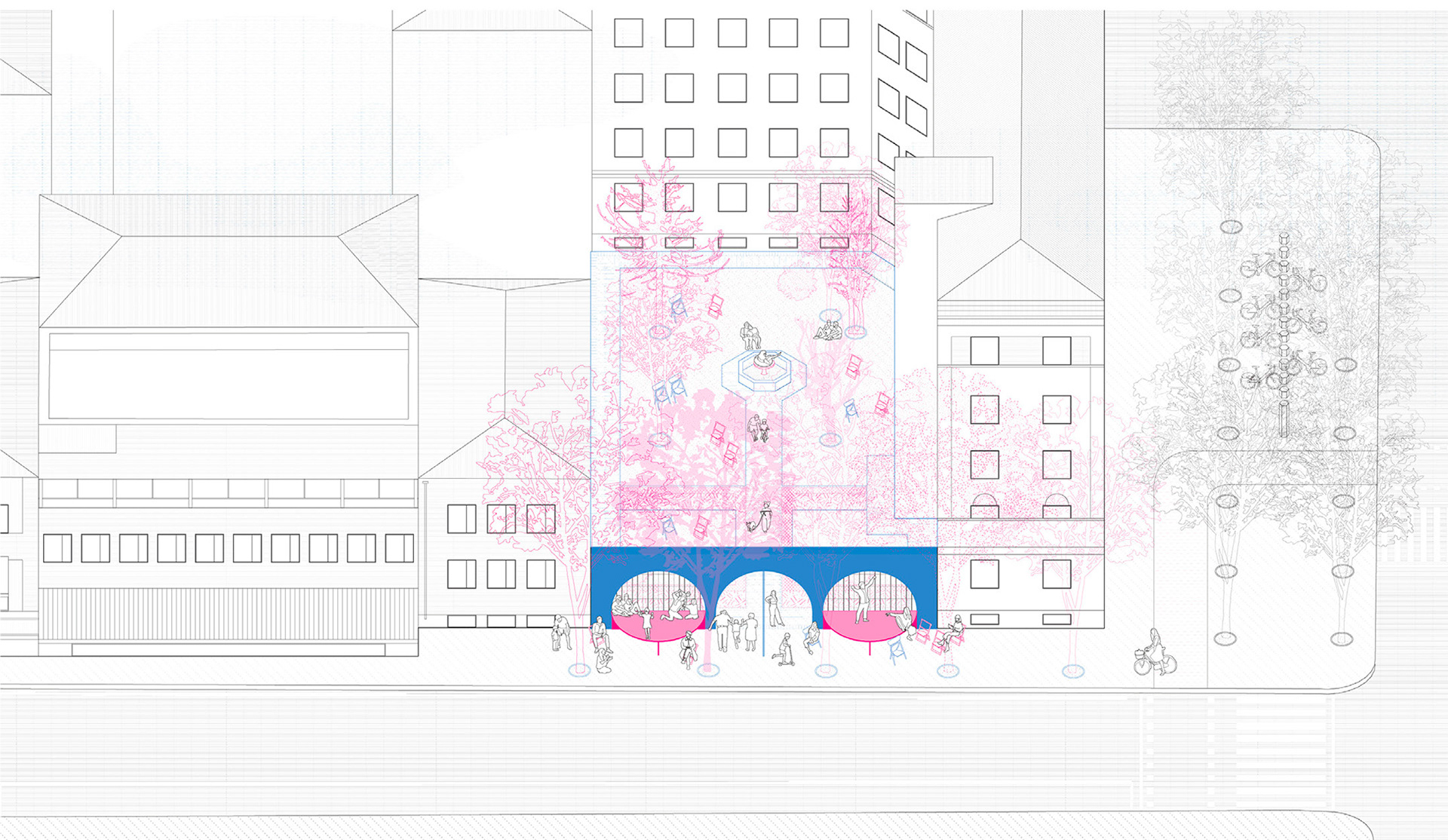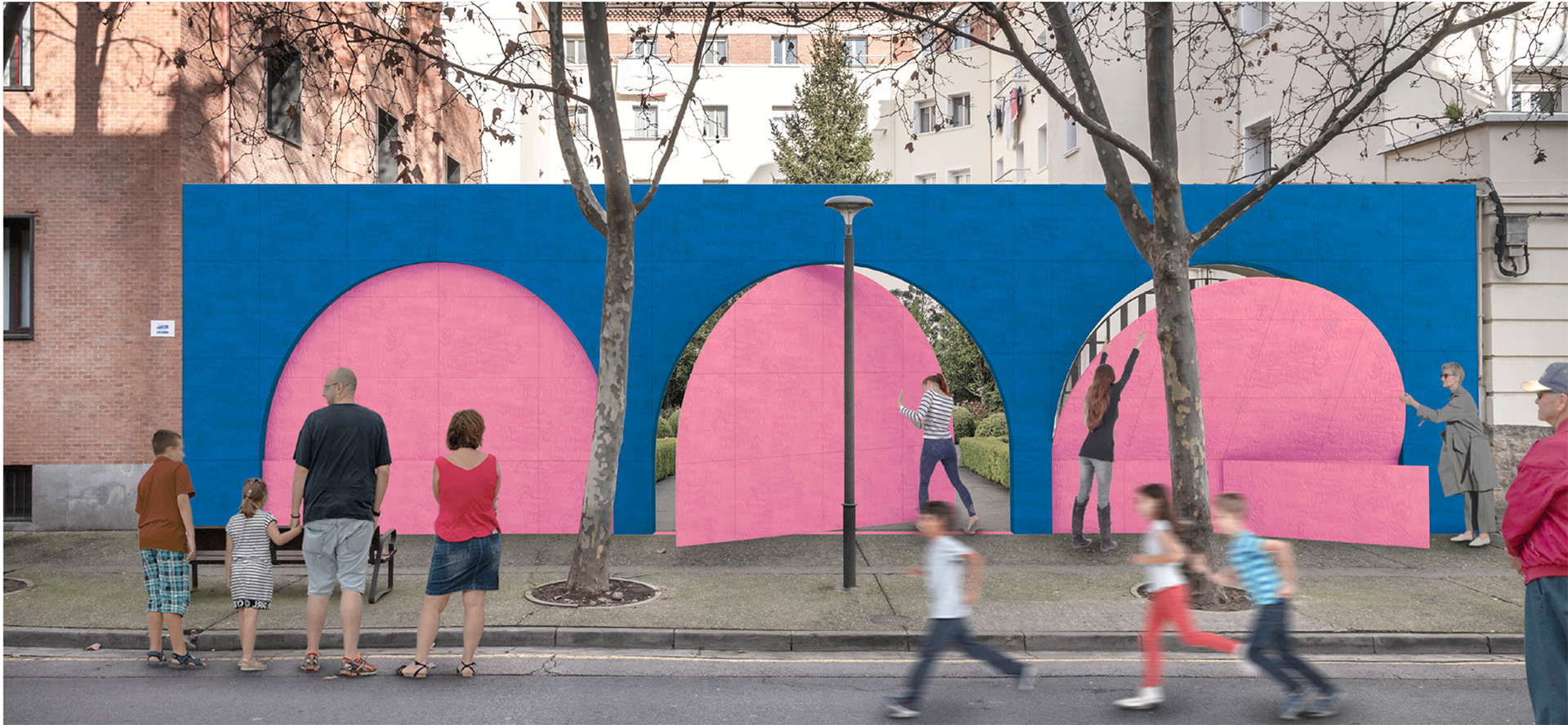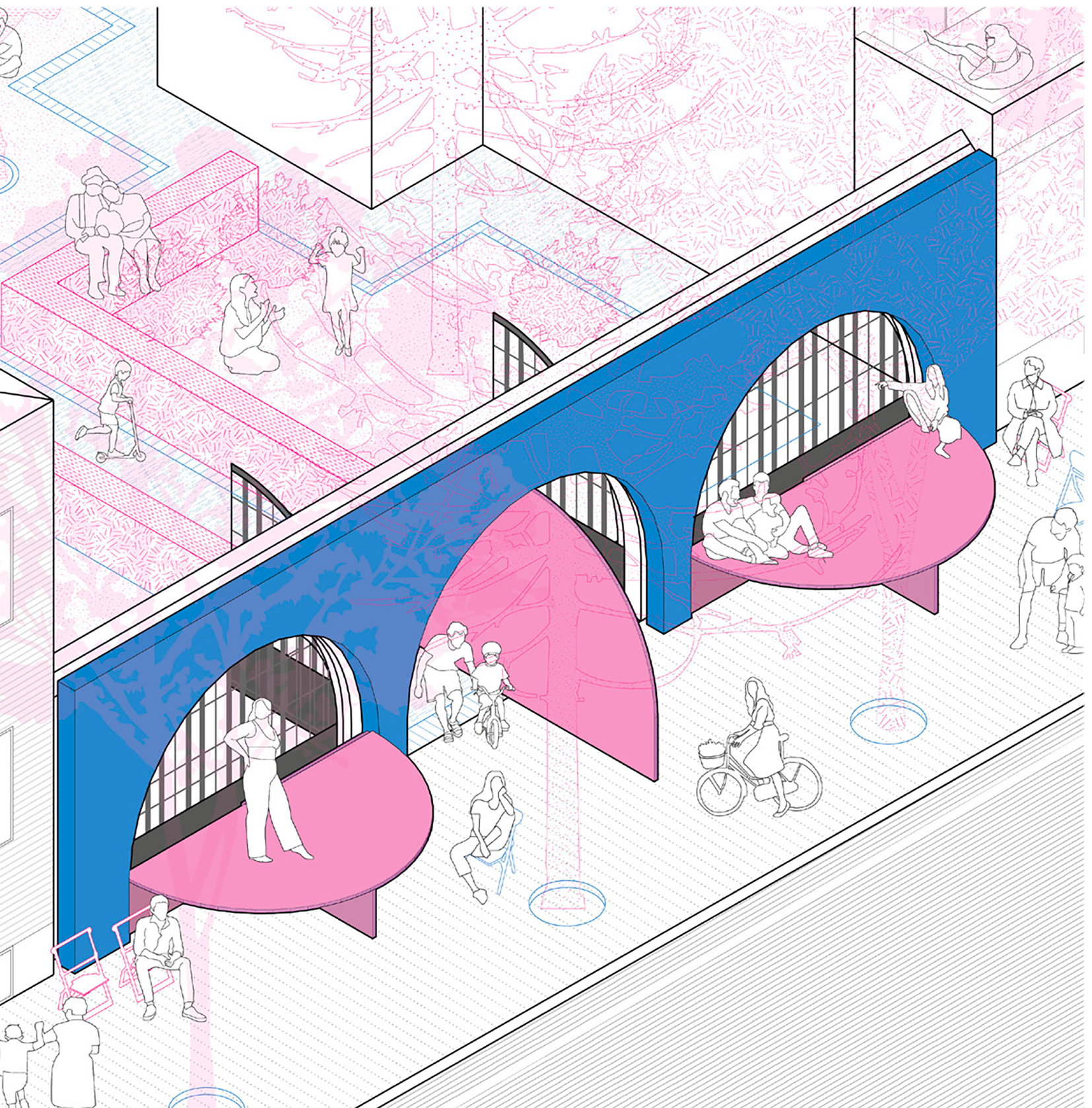il pezzetto

what: finalist project at Concentrico, Logroño International Festival of Architecture and Design.
with: m2ft architects, arch. ph.d. Gianluca Croce
where: Logroño, Spain
when: 2022
key words: urban regeneration, ephemeral architecture, private-public diaphgramatic spaces, urban practices
Il Pezzetto is a playful urban device that parasites the existing dividing wall between Calle Bustamante and the semi-private garden. This element, characterized architecturally by the sequence of three large arches, is currently a physical barrier that separates the two urban areas spatially, leaving them only in visual communication.
Therefore, il Pezzetto explores the possibility of creating new relationships between existing urban spaces, suggesting new configurations and possible new uses that enrich urban life. Il Pezzetto duplicates the existing wall and simultaneously parasitizes it by superimposing a color interface that uses arcs as a new functional possibility. As a result, the arches are transformed into elements open to the free colonization of the inhabitants, who can experience new ways of using the urban space and the duality between the public and the private. Thus, the central arch rotates on itself to become an access door to the courtyard that increases the visual and physical permeability of the garden and becomes an element of play that interacts directly with the street. The lateral arches are transformed into two movable spaces whose opening determines the formation of dynamic elements that can be easily opened and become surfaces that can be used as seats, tables, scenarios, etc. The original arches are thus transformed into elements that promote new uses of the public space, that extend the “desks,” that increase the spaces street relations, allowing new forms of social, cultural, and recreational expression for children and adults. At a formal level, il Pezzetto is camouflaged with its context, but at the same time, it is immediately recognizable thanks to the use of vivid colors that directly reflect those of the Concentric Festival. In this way, attention is drawn to the existing wall itself and immediately reveals how an architectural element can become an activating device of urban life. Furthermore, colors make it visible from all angles and emphasize the geometry of the existing architecture, pivoting on possible new uses.

